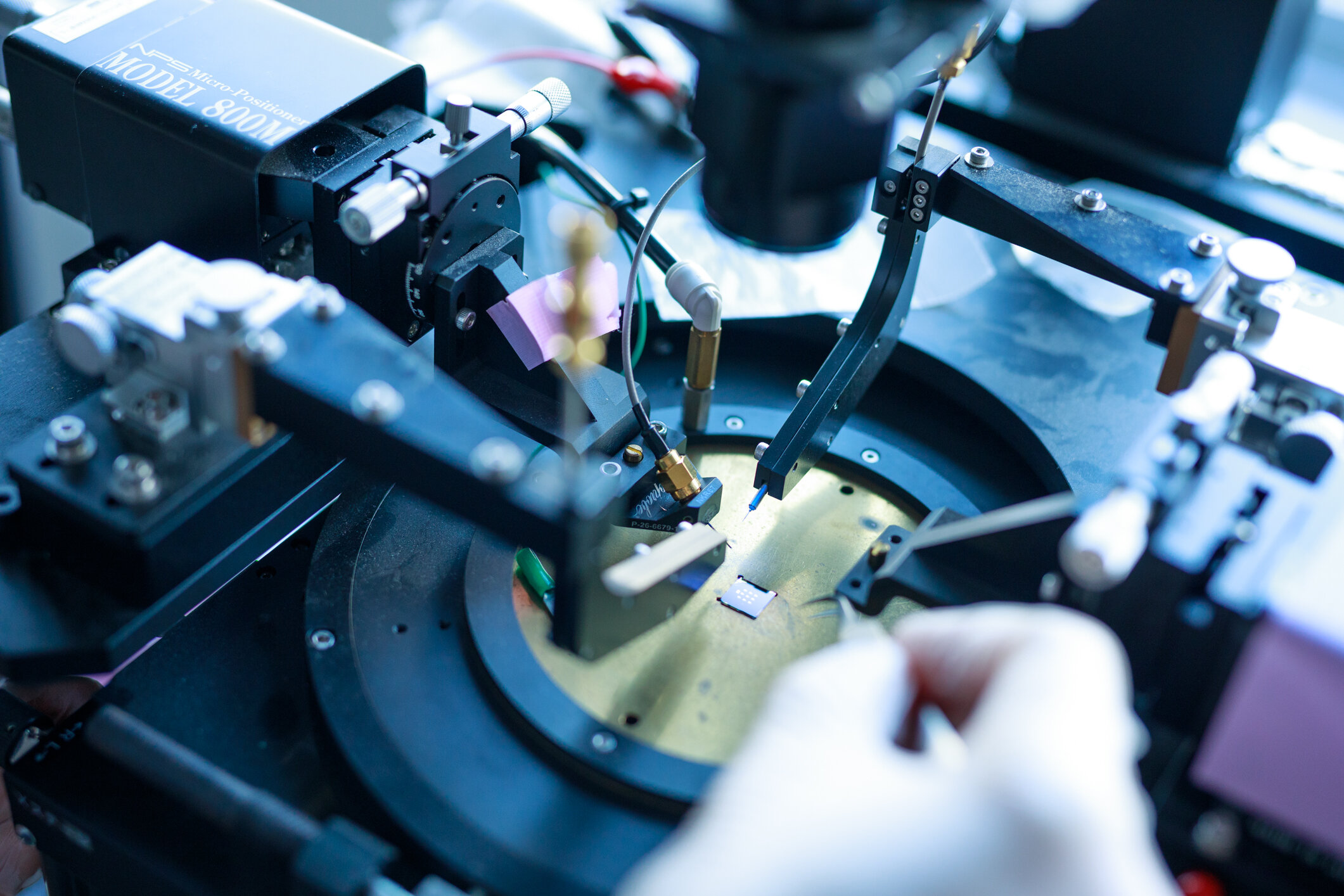Experimental setup for detecting orbital pumping. Credit: Hayashi et al.
Electrons inherently carry both spin and orbital angular momentum (i.e., properties that help understand the rotational motions and behavior of particles). Although some physicists and engineers have attempted to harness the spin angular momentum of electrons to develop new technologies known as spintronics, the orbital momentum of these particles has rarely been considered until now.
Currently, generating an orbital current (i.e., a current of orbital angular momentum) is still much more challenging than generating a spin current. Nevertheless, approaches to successfully harness the orbital angular momentum of electrons could open the possibility for the development of a new class of devices called orbitronics.
Researchers from Keio University and Johannes Gutenberg University report the successful generation of an orbital current from magnetization dynamics, a phenomenon called orbital pumping. Their paper, published in Nature Electronicsoutlines a promising approach that will allow engineers to develop new technologies that exploit the orbital momentum of electrons.
“Our work is inspired by ongoing research in the field of spintronics and orbittronics, the orbital analogue of spintronics,” Kazuya Ando, associate professor at Keio University, told Phys.org.
“Spintronics has made progress by investigating the physics of spin current, the flow of spin angular momentum. Recent studies have emphasized the crucial role of orbital current, the equivalent of spin current, in solid-state devices. However, generating orbital currents has remained a significant challenge.”
The recent study by Ando and his colleagues was inspired by spin pumping, a well-known phenomenon that allows engineers to generate spin currents. The main goal of their study was to realize the orbital counterpart of this phenomenon, called orbital pumping.
“We believe that demonstrating orbital pumping will advance the fundamental understanding of orbitronics and open up new opportunities for research and technological applications,” Ando said.
Orbital pumping essentially involves generating an orbital current via the dynamics of magnetization (i.e., the density of magnetic dipole moments induced in magnetic materials when placed near a magnet). To perform their experiments, Ando and his colleagues specifically used a nickel-titanium bilayer structure.
“By applying a radio frequency magnetic field to the structure, we induced magnetization dynamics in the nickel layer, which in turn generated an orbital current in the titanium layer through orbital pumping,” Ando explained. “We detected this orbital current electrically using the reverse orbital Hall effect, a phenomenon that converts an orbital current into a charge current.”
By applying a magnetic field to their nickel and titanium structure, the researchers were able to successfully demonstrate orbital pumping. The techniques they used ultimately proved effective in generating an orbital current in an experimental setting.
“In the development of spin current-based spintronics, spin pumping has played a crucial role, revealing a variety of phenomena and functions arising from spin currents,” Ando said. “Similarly, our discovery of orbital pumps, the orbital counterpart of spin pumps, is expected to serve as a fundamental basis for novel electronic technologies and physics based on orbital currents.”
The promising results obtained by Ando and his colleagues could soon pave the way for new studies aimed at generating orbital currents via magnetization. This work could eventually lead to the introduction of orbitronic devices, a class of electronics that has been largely overlooked until now.
“Our future research will focus on better understanding the fundamental properties of orbital currents and their interactions with magnetization dynamics,” Ando added.
“We also aim to elucidate the combined effects of spin currents and orbital currents to develop devices that exploit both spin and orbital angular momentum of electrons. Through these efforts, we hope to advance the fields of spintronics and orbitronics and pave the way for new electronic technologies.”
More information:
Hiroki Hayashi et al, Observation of orbital pumping, Nature Electronics (2024). DOI file: 10.1038/s41928-024-01193-1
© 2024 Science X Network
Quote: Study shows generation of orbital current via magnetization dynamics (2024, July 10) Retrieved July 10, 2024 from https://phys.org/news/2024-07-generation-orbital-current-magnetization-dynamics.html
This document is subject to copyright. Except for fair dealing for private study or research, no part may be reproduced without written permission. The contents are supplied for information purposes only.
